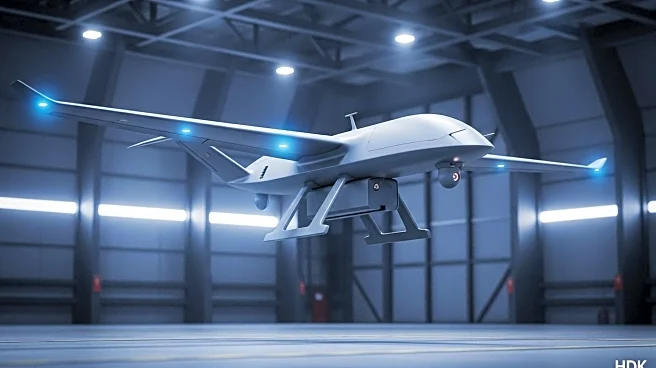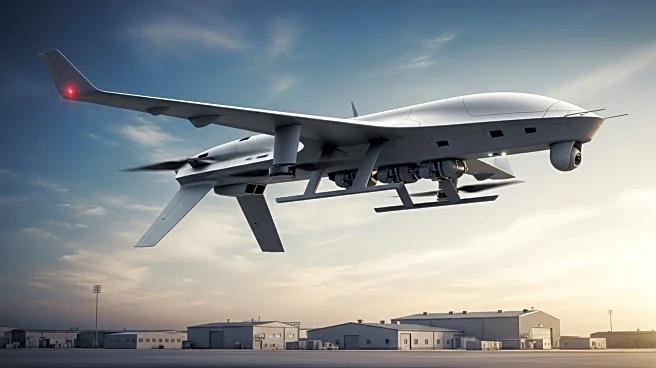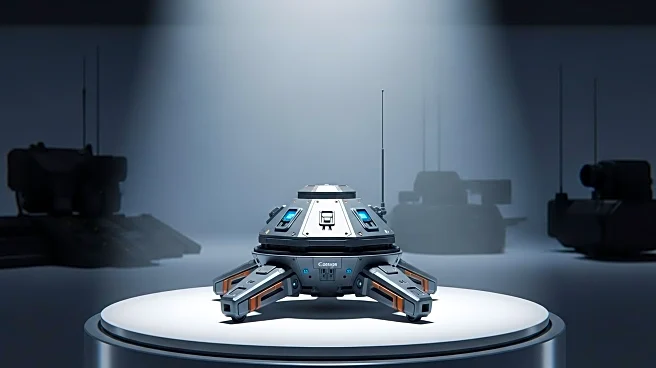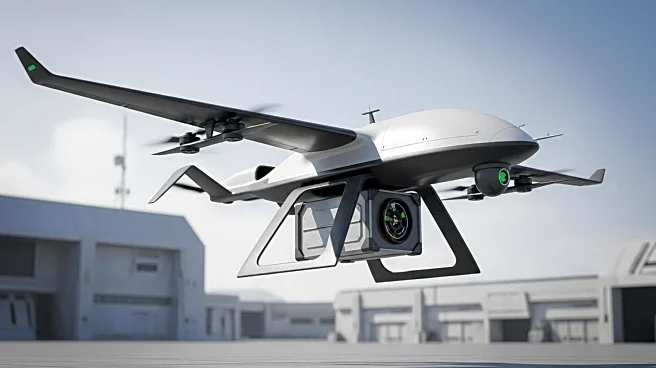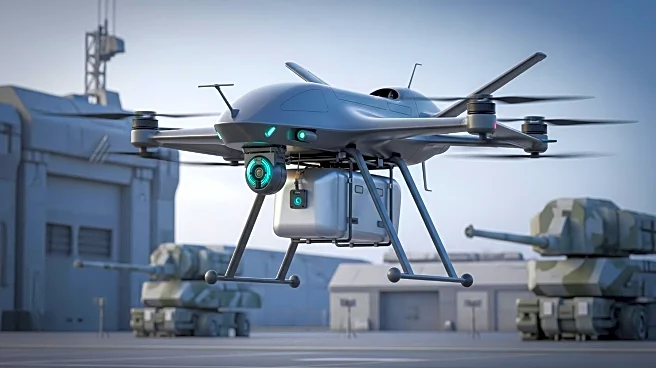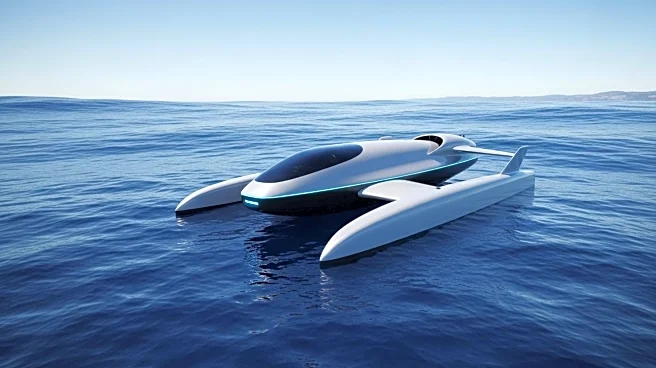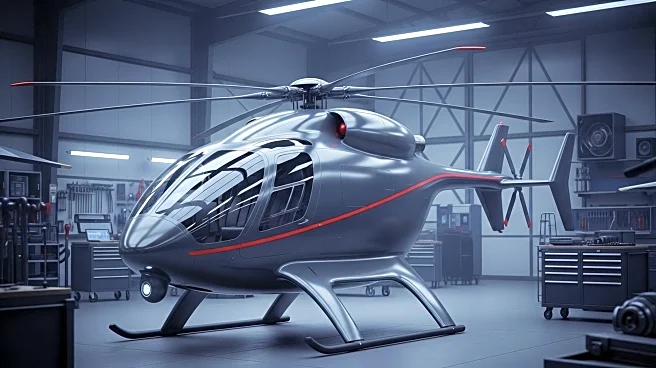What's Happening?
Pyka, a California-based autonomous aircraft company, has introduced its new DropShip unmanned aerial vehicle (UAV) designed for defense applications. The DropShip offers modular payload configurations and precision airdrop capabilities, with a ferry range exceeding 3,500 miles and a payload capacity of up to 550 pounds. It can operate in an all-electric, low-signature mode for covert missions, supporting both theater-scale operations and tactical resupply. The system is designed for rapid deployment, becoming flight-ready in less than an hour and operable by a single soldier.
Why It's Important?
The introduction of the DropShip UAV represents a significant advancement in autonomous cargo delivery for defense forces, potentially enhancing operational efficiency and safety. By eliminating the need for human pilots in dangerous environments, the UAV reduces risk and increases the flexibility of supply chain logistics in military operations. This technology could lead to cost savings and improved mission success rates, as it addresses gaps in the market for autonomous, long-range cargo delivery systems.
What's Next?
Pyka's DropShip UAV is poised to undergo further testing and evaluation by the U.S. Air Force and Army, which have already received several units for assessment. The company aims to refine its technology and expand its applications within the defense sector, potentially leading to broader adoption and integration into military logistics. As the UAV proves its capabilities, it may influence future procurement decisions and drive innovation in autonomous flight technology.
Beyond the Headlines
The development of the DropShip UAV highlights the growing trend towards automation and electrification in aviation, particularly within the defense industry. This shift raises ethical and strategic considerations regarding the use of autonomous systems in military operations, including issues of accountability and decision-making in combat scenarios. The technology also reflects broader efforts to reduce the environmental impact of aviation through electric propulsion systems.
